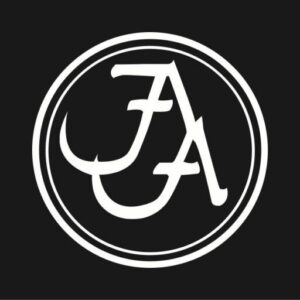
OUR LEGACY
The Florence Academy of Art was founded in 1991 by Daniel Graves to provide the highest level of instruction in classical drawing, painting and sculpture. Graves’ vision of the Academy is its potential to train a select group of highly skilled Realist painters and sculptors.
His philosophy, which underlies the Academy’s curriculum and method of instruction, demands a return to discipline in art, and to the direct study of nature and the tradition of generations of great painters that preceed ours, as the foundation for great painting and sculpture. Under his direction, the Academy is a source of stimulation and healthy competition, in which an internationally varied group of students receives training from professional painters of different nationalities, in cities renowned for their beauty and artistic past.*
As a student at the FAA / Sweden, you get the best of both worlds. Our students enjoy all the advantages of a small atelier-school: keeping enrollment to 28 allows us to fit under one roof. This means students at different levels in the curriculum work next to each other, so beginning students have the chance to watch and learn from the more advanced. In addition, the private studios of FAA / Sweden’s faculty are on school premises. This close proximity and access to the instructors allows for daily interaction, and the opportunity to watch professional artists at work.
Our students come from all over the world. Our network of galleries and alumni extends far beyond the three countries we operate in. At the same time we appreciate the special quality of our environs, and keep a local touch to the school. There are clear advantages to studying in Sweden – we focus on them.
OUR PHILOSOPHY
The Florence Academy of Art is a small and dynamic center dedicated to the training of artists through the combination of intense observation with advanced craft skills. The curriculum derives from the classical-realist tradition rooted in the 19th century (most particularly exemplified by the French Academies in the teaching of master painters like Gérôme, Bonnat and Carlos Duran) but also addresses the creative and professional position of the artist in a contemporary environment.
It is the view of this Academy that throughout the 20th century prominent movements of art have steadily drawn attention (and teaching) away from close observation of the material world and the acquisition of strong technical skills.
The Academy therefore provides students with the opportunity to explore distinctive aspects of their chosen subject through the development of considerable powers of draftsmanship, direct study of works of the greatest examples of painting from past generations and a deep, practical understanding of the materials and methods of the artist. By this means, and through the resulting identification of clear artistically technical objectives, students acquire creative self-confidence, visual understanding and subtle and precise powers of description.
Study at the Academy centers upon the importance of drawing (particularly drawing from the human figure) as a means to gaining skill in painting or sculpture. Through intense observation students acquire a visual literacy that enables them to interpret humanist values in their work, and, ultimately, seek to create a work of universal relevance.
The program is based upon systematic progression through the classical disciplines, interpreting the basic elements of composition, form, color harmony and expression. Advancement to each level of study is dependent upon successful completion of the previous level. In this way, the program is carefully matched to each individual and not imposed in a ‘study group’ context.
Institutional Goals
In summary, the Academy aims to train artists to:
- draw to a very high standard
- execute works in painting or sculpture to high levels of professional craftsmanship
- acquire a deep understanding of the works and methods of the greatest examples of paintings from past generations.
- acquire a sound awareness of commercial practices in Fine Art
* In an earlier version of this summary, the formulation ”canons of beauty” and the term ”Old Masters” were used. Since these two combinations of words seemed to be an unnecessary distraction for some visitors of our website, we have removed them. For any further clarification on the foundation principals of the educations we provide, the values shared by faculty and students, why people come here to study and what we teach them — please reach out to Andreas Birath, Academic Director: andreas@florenceacademyofart.se

